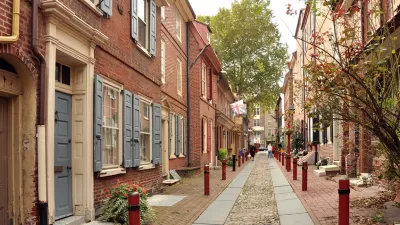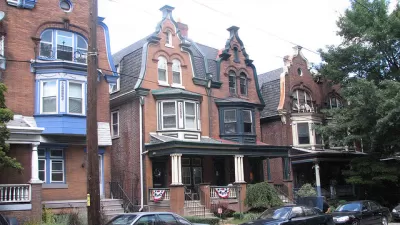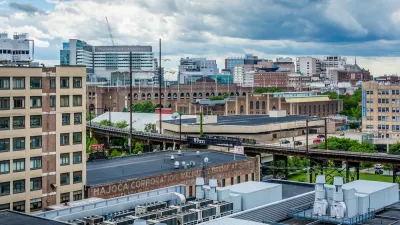How well do public spaces reflect the changing conceptions of "public good" in contemporary political discourse? The UPenn design community starts a challenging conversation.

PennPraxis, a design collaborative spawned by faculty and students of University of Pennsylvania's design school, will begin a program called the Praxis Dialogues, in partnership with PlanPhilly. The series of conversations will begin with an exploration of the public good and its meaning for the design community. The program is free and open to the public.
From the PlanPhilly blog:
"We are all, in some manner, motivated by public good...Public good in a full sense challenges us to envision shared spaces as not just those leftover once private goods are consumed. How does our shared, “public” realm express and live up to our political and social ideals? We owe it to ourselves, our collaborators, and our fellow citizens to be explicit about this ideal – and to be candid in our evaluation of how we succeed or fail to realize it."
Recognizing the public good as a political concept, the questions posed are challenging and will address such timely issues as access, stewardship, ownership, and cultural confidence. The emphasis will be on practice rather than lofty abstractions. "Ideas of public good are changeful, reflections of the politics of a moment. The current moment is messy."
Questions posed will also address the public good with respect specifically to Philadelphia and its current political environment.
FULL STORY: Praxis Dialogues: The 'public good' in practice

Study: Maui’s Plan to Convert Vacation Rentals to Long-Term Housing Could Cause Nearly $1 Billion Economic Loss
The plan would reduce visitor accommodation by 25,% resulting in 1,900 jobs lost.

Placekeeping: Setting a New Precedent for City Planners
How a preservation-based approach to redevelopment and urban design can prevent displacement and honor legacy communities.

Using Old Oil and Gas Wells for Green Energy Storage
Penn State researchers have found that repurposing abandoned oil and gas wells for geothermal-assisted compressed-air energy storage can boost efficiency, reduce environmental risks, and support clean energy and job transitions.

Washington State Plans Ambitious ‘Cycle Highway’ Network
The state is directing funding to close gaps in its existing bike network and make long-distance trips more accessible.

Homeowners Blame PG&E for Delays in ADU Permits
The utility says it has dramatically reduced its backlog, but applicants say they still face months-long delays for approvals for new electrical work.

Rethinking Wildfire Defense: How a Landscape Approach Can Protect Neighborhoods
Post-fire analysis of the Eaton Fire reveals that a landscape approach — including fire-resistant vegetation, home hardening, and strategic planning — can help reduce wildfire risk, challenging assumptions that trees and plants are primary fire hazards.
Urban Design for Planners 1: Software Tools
This six-course series explores essential urban design concepts using open source software and equips planners with the tools they need to participate fully in the urban design process.
Planning for Universal Design
Learn the tools for implementing Universal Design in planning regulations.
Borough of Carlisle
Caltrans
Heyer Gruel & Associates PA
Institute for Housing and Urban Development Studies (IHS)
City of Grandview
Harvard GSD Executive Education
Salt Lake City
NYU Wagner Graduate School of Public Service
City of Cambridge, Maryland




























